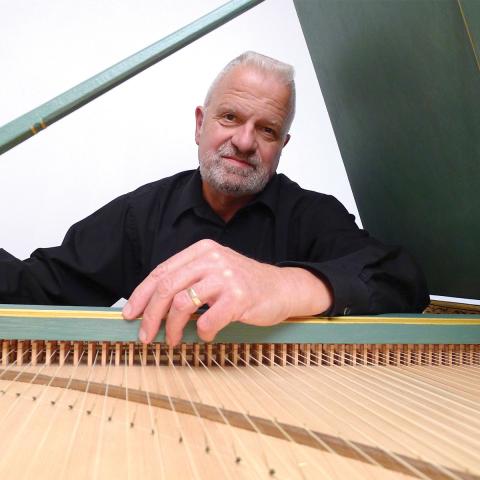
Armand-Louis Couperin: Complete Keyboard Works
During this past concert season I have been revisiting a few of my favorite harpsichord solos from the French repertoire. High among these have been several works by Armand-Louis Couperin (La Chéron and l’Affligée) and, with guest harpsichordist Mitchell Crawford, the first movement of the same composer’s Symphony for Two Harpsichords. Following one of these concerts, my sometime harpsichord student Deborah Dana brought one of the two B-flat solo pieces to her lesson, using a score printed from an online source. I asked her for more complete information, and she graciously sent me this link to Martin Pearlman’s website: http://www.martinpearlman.com/artist.php?view=dpk#docs. And thus began this month’s column, with its information about a very large gift to the entire harpsichord community!
Pearlman’s online magnum opus comprises the complete keyboard works of Armand-Louis Couperin in a pristine scholarly edition of 350 downloadable pages: under Documents, simply scroll down to the fourth icon (Armand-Louis Couperin Edition Complete) and make your choices—the whole edition or the helpful preface, followed by the individual groups of pieces: a very legible modern-notated edition of the complete Pièces de Claveçin, several newly offered miscellaneous solo pieces (including one with organ registrations), and the extensive group of works for two harpsichords. There are also two appendices comprising separate parts for Harpsichord One and Harpsichord Two of the duo-harpsichord compositions.
All of this is offered for free downloading and performing: a gift from the generous and thoughtful editor, who also has given me permission to quote from his introduction: “Based on work I began in the 1970s I decided, in the modern spirit of online sharing, to make this edition available without charge to those who are interested in it. I ask only that any performers of the two Quatuors which I have completed acknowledge my role in writing the second harpsichord parts (which were missing from the manuscripts).”
What a kind and useful gift! Previously we have had the two volumes of selected works for keyboard edited by the eminent scholar and organist/harpsichordist David Fuller for A-R Editions of Madison, Wisconsin, and a complete facsimile edition of the 1752 solo harpsichord pieces by Brigitte Haudebourg for French publisher August Zurfluh. Incidentally, both Fuller and Haudebourg have recorded various pieces from their respective print editions, as has Martin Pearlman.
Pearlman graciously acknowledged the work of his predecessors in publication. He also dedicated this extensive study to Gustav Leonhardt, from whom he took harpsichord lessons in Amsterdam. In a note to me Pearlman mentioned, “Mr. Leonhardt was quite complimentary . . .” concerning the scholarly effort involved in this new addition to A-L Couperin scores.
Rather than reprint the many helpful sections of Pearlman’s 359-page oeuvre, I present here a list of those topics that curious readers may find to be useful subjects that are presented in the fifty-page preface: Introduction and Acknowledgements; Genealogical Table [of the Couperin Dynasty]; Life of Armand-Louis Couperin; Couperin’s Keyboard Instruments [particularly of interest since the composer’s wife was a Blanchet from that family of harpsichord-building fame]; Performance Issues (Double Bars and Repeats, Abbreviations, Appoggiaturas, Ornaments); [A comprehensive] Bibliography; Editorial Policy; Description of Sources; Critical Notes; and, finally, Portraits and Facsimiles.
What follows are 219 pages comprising the easy-to-read musical scores, which include several formerly unknown works in the category “Other Pieces for Solo Keyboard Instruments.” Additionally, there is access to more than a hundred additional pages of individual parts for harpsichords 1 and 2 of the duo works. (In our Dallas printing spree we consumed more than a ream of paper and several cartridges of black printer ink, all for this very “Baroque” cause.)
What treasures! What a treat! Endless thanks are due Martin Pearlman for his generosity and true collegial spirit. And, finally, a tip of the hat to Deborah Dana in this, her birthday month. Once again, as with her introducing me to the Wagnerian unmeasured prelude by Scott Ross (cited in The Diapason, July 2017, page 11), her teacher has learned from his student. And that (along with hearing musical progress) is one of the greatest joys in a professor’s life!



